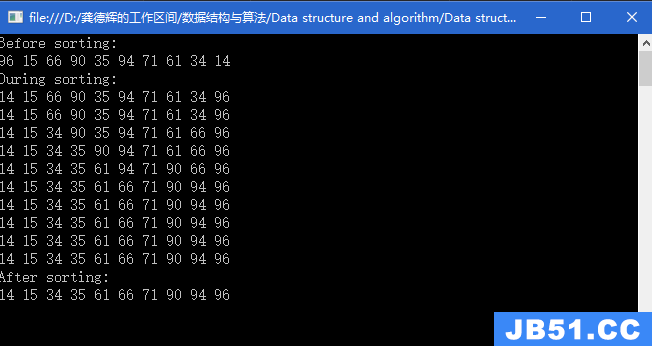以前,我们实现一个栈,轻轻松松,无需考虑太多因素,即可实现。
现在,要求在一个数组里实现两个栈,那么在数组里怎么实现栈呢?
无非就是下标索引,方法也不局限一种,例如:用奇数下标作为栈s1的结构,用偶数作为s2的结构;再者:一前一后的结构,栈s1从前往后,栈s2从后往前。
第一种方法,倘若其中一个栈只入了一个元素,而另一个入了很多元素,那么会造成内存碎片,但是此方法有利于数组增容;
第二种方法,空间利用率很高,但是不有利于数组增容。
虽然各有利弊,但是实现的机制相同。
#include<iostream> usingnamespacestd; template<classt> classarrayWithTwoStack { public: arrayWithTwoStack(intsize) :top1(-1),top2(-1),_size(size) { _array=newT[size+1]; } ~arrayWithTwoStack() { if(_array) { delete[]_array; } } public: voidPush(intindex,Tdata) { if(_size%2==0) { if((top1>_size-2)||(top2>=_size-1)) { cout<<"Stackisoverflow!"<<endl; return; } } else { if((top1>_size-1)||(top2>=_size-2)) { cout<<"Stackisoverflow!"<<endl; return; } } 0是一号栈,1是二号栈 if(index==0) { if(top1==-1) { top1=0; _array[top1]=data; } else { top1+=2; _array[top1]=data; } } if(index==1) { if(top2==-1) { top2=1; _array[top2]=data; } else { top2+=2; _array[top2]=data; } } } TPop(intindex) { intret; if(index==0) { if(top1<0) { return-1; cout<<"Stackisunderflow!"<<endl; } else { ret=_array[top1]; top1-=2; } } if(index==1) { if(top2<1)//top2从下标为1开始 { return-1; cout<<"Satckisunderflow!"<<endl; } else { ret=_array[top2]; top2-=2; } } returnret; } Ttop(intindex)//返回栈顶元素 { if(index==0&&top1>=0) { return_array[top1]; } if(index==1&&top2>=1) { return_array[top2]; } cout<<"NoTop!"<<endl; exit(0); } boolisEmpty(intindex) { if(index==0&&top1<0) returnfalse; if(index==1&&top2<1) returnfalse; returntrue; } voidShow() { if(top1<0&&top2<1) { cout<<"Stackhasnodata!"<<endl; return; } else { for(inti=0;i<_size;i++) cout<<_array[i]<<""; } cout<<endl; } private: Ttop1; Ttop2; int_size; T*_array; }; intmain() { arrayWithTwoStack<int>s(10); s.Push(0,0); s.Push(0,2); s.Push(0,4); s.Push(1,1); s.Push(1,3); s.Push(1,5); s.Push(1,7); s.Push(0,6); s.Push(0,8); s.Push(1,9); s.Push(0,10); s.Show(); cout<<s.Pop(0)<<""; cout<<s.Pop(0)<<""; cout<<s.Pop(0)<<""; cout<<s.Pop(0)<<endl; cout<<s.Pop(1)<<""; cout<<s.Pop(1)<<""; cout<<s.Pop(1)<<""; cout<<s.Pop(1)<<endl; cout<<s.top(0)<<endl; cout<<s.top(1)<<endl; s.Pop(0); cout<<(s.isEmpty(0)?"Yes":"No")<<endl; cout<<(s.isEmpty(1)?"Yes":"No")<<endl; system("pause"); return0; }
若有纰漏,欢迎指正。
本文出自 “Vs吕小布” 博客,请务必保留此出处http://www.jb51.cc/article/p-gdupegjj-ms.html



